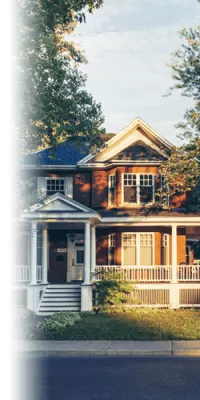Prevention basics
While natural gas is one of the safest and cleanest energy sources, it is nevertheless important to follow the basic rules of prevention, maintenance and installation for natural gas equipment.
Our École de technologie gazière offers a number of training activities on public safety and fire safety. See our website for more information on the training activities offered.
How to recognize a natural gas leak ? By its smell. Natural gas is odourless. A very smelly substance is added so leaks can be detected. This substance, called mercaptan, gives off a strong smell of rotten eggs.
What to do?
- Avoid flames and sparks. Do not smoke. Do not turn on any appliance near the leak, not even a cell phone or a light switch – static electricity could produce a spark.
- Leave the building immediately or move well away from the leak if you are already outdoors. Without delaying your exit, on your way out, you could open doors and windows (or leave them open) to ensure maximum ventilation.
- Call 9-1-1. If this service is not available in your region, call 1 800 361-8003.
Carbon monoxide (CO) is an odourless and colourless gas. It is produced in small quantities by gasoline engines and other appliances that burn fuel with only partial or incomplete combustion. If CO accumulates due to appliances not being well-maintained, or if they are not working properly, it could cause serious health problems, even death. However, a natural gas appliance that is well calibrated is just as safe as a standard-compliance electrical appliance.
Symptoms of CO poisoning
The symptoms are headache, nausea, dizziness, vomiting.
What to do?
Leave the building immediately. If someone is sick or unable to move, carry her or him outside. In all cases of illness, contact emergency medical services by dialing 911. Before re-entering the home, air out all the rooms and determine the cause of the carbon monoxide presence.
How to prevent poisoning?
- Have your natural gas appliances regularly and carefully maintained. Maintenance must be performed by a qualified technician with practical knowledge of the operation, installation and disposal of combustion appliances.
- Install a carbon monoxide detector that meets CSA 6.19 or UL 2034 standards, available in large department stores. Just like a smoke detector, it will alert you if the amount of carbon monoxide exceeds a predetermined threshold. Using a carbon monoxide detector is mandatory in certain cases, such as in special-purpose buildings, business establishments of more than two stories and residential buildings of more than two stories or more than eight units. However, regardless of your building, your municipality may have stricter regulations than the Building Act or that apply to buildings not covered by the Act. In all cases, to ensure your safety, the Régie du bâtiment, the CNESST and fire services always recommend having a detector installed.
- Make sure that your exhaust vents and chimneys are working properly, and that the air intake and exhaust vents are cleared of snow in the winter.
If the situation affects natural gas appliances, close the natural gas shutoff valve and call Énergir emergency service at 1 800 361-4568 or 514 598-3222. If you have to evacuate your home due to a flood, close the shutoff valve before leaving and alert Énergir.
The exterior natural gas installations (connection, meter, air intake and exhaust pipe) must be accessible at all times. The connection must therefore be kept clear of any snow or ice accumulation. This situation could lead to the interruption of the natural gas supply or a substandard appliance performance.
The natural gas industry has been using trenchless technology for years to install its underground infrastructures. While this approach saves time, is cost-effective and has little impact on the environment, some natural gas lines installed using this technique may have inadvertently intersected with a sewer service line.
When carrying out inspection, cleaning or rehabilitation activities, if you discover there is a gas line crossing over a sewer service line, please contact Énergir so that we can take the appropriate action.
What to do?
Some cases therefore call for being extra vigilant. If you try to clear a blocked sewer service line using mechanical tools or a high-pressure water jet, you could inadvertently damage a natural gas line. This could cause a gas leak, creating a potentially dangerous situation.
- Call Info-Excavation at 1 800 663-9228 and select the emergency option.
- If Info-Excavation can confirm that there is no interference between the natural gas and sewer service lines, you will be given verbal authorization and a file number indicating you can proceed.
- If there are natural gas lines, a crew will be sent to the site to locate the natural gas and the sewer service lines.
- If a natural gas line does interfere with the blocked sewer service line, the situation will be corrected immediately and a document will be issued subsequently, allowing you to proceed with the work.
What to do?
Some cases therefore call for being extra vigilant. If you try to clear a blocked sewer service line using mechanical tools or a high-pressure water jet, you could inadvertently damage a natural gas line. This could cause a gas leak, creating a potentially dangerous situation.
- Call Info-Excavation at 1 800 663-9228 and select the emergency option.
- If Info-Excavation can confirm that there is no interference between the natural gas and sewer service lines, you will be given verbal authorization and a file number indicating you can proceed.
- If there are natural gas lines, a crew will be sent to the site to locate the natural gas and the sewer service lines.
- If a natural gas line does interfere with the blocked sewer service line, the situation will be corrected immediately and a document will be issued subsequently, allowing you to proceed with the work.
